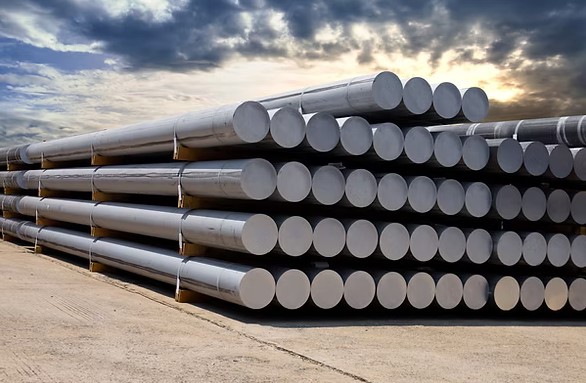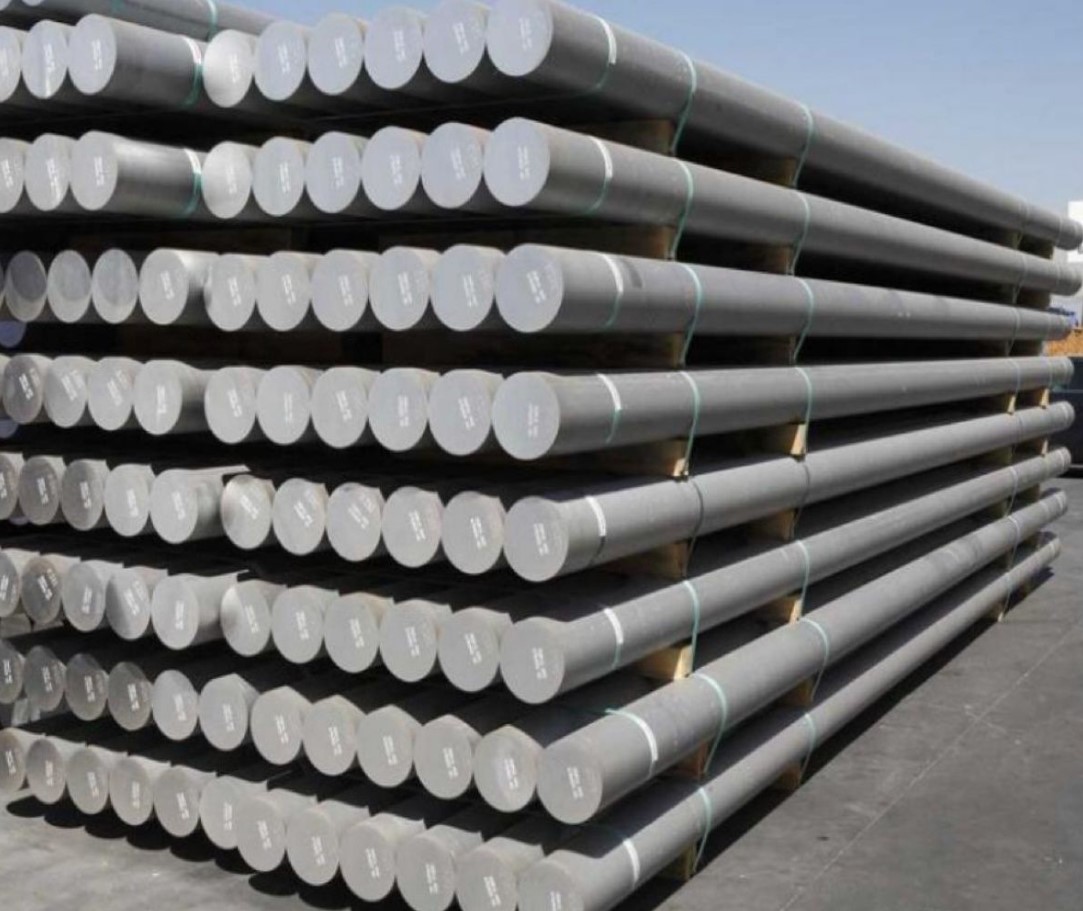Aluminum billet melting plays a crucial role in the production of high-quality aluminum products across various industries. At Stavian Industrial Metal, we specialize in delivering optimized solutions for this essential process, ensuring precise temperature control, energy efficiency, and metal purity. Understanding how aluminum billets are melted is key to improving manufacturing performance and reducing material waste. Whether you are involved in extrusion, forging, or casting, mastering the aluminum billet melting process allows for enhanced mechanical properties and superior surface finish in the final products.
Aluminum billet melting is a critical stage in the aluminum manufacturing process that directly impacts the quality, consistency, and mechanical properties of the final product. This procedure involves heating solid aluminum billets to a specific temperature until they reach a molten state, ready for casting or extrusion. Due to aluminum’s relatively low melting point of around 660°C, the process is energy-efficient compared to many other metals, but it requires precise control to maintain purity and minimize oxidation.
In industrial settings, aluminum billet melting is performed using furnaces such as induction furnaces, reverberatory furnaces, or rotary furnaces, each selected based on production needs and scale. These systems must ensure uniform heat distribution and control over contaminants, particularly when working with recycled aluminum billets. Failure to maintain these standards can result in inclusions, gas porosity, or inconsistent mechanical behavior in downstream processes.
The quality of the billet before and after melting also plays a vital role. Factors such as the alloy composition, billet storage conditions, and pre-cleaning measures can greatly influence the success of the melting operation. For industries such as automotive, aerospace, or construction, where material performance is non-negotiable, mastering the aluminum billet melting process is a key advantage.

Choosing the appropriate furnace technology is essential for efficient and high-quality aluminum billet melting. The type of furnace used can significantly impact the operational cost, melting speed, energy consumption, and overall product quality.
Induction furnaces are known for their fast melting capabilities and excellent control over temperature. They operate using electromagnetic induction, which generates heat within the metal itself rather than relying on direct flame or resistive heating elements. This method minimizes oxidation and contamination risks, making it ideal for producing high-purity aluminum melts.
One of the advantages of induction furnaces is their compact design and automation potential. They are often favored in operations requiring frequent alloy changes or precision metallurgy. However, the initial investment and operating complexity can be higher compared to more traditional systems.
Reverberatory furnaces are commonly used for large-scale aluminum billet melting operations. In these furnaces, burners heat the roof and walls, and the heat is then radiated onto the metal surface. This method allows for high throughput and is particularly effective when processing large batches or recycling aluminum scrap.
Although reverberatory furnaces offer a good balance between efficiency and volume, they can suffer from higher heat losses and require regular maintenance to manage dross formation and slag buildup. Proper insulation and modern burner technology can mitigate these drawbacks, improving overall energy efficiency.
Rotary furnaces are ideal for melting contaminated or heavily oxidized aluminum scrap. These furnaces rotate continuously, promoting uniform melting and better mixing. They are equipped with afterburners and dust collection systems to handle emissions and maintain environmental compliance.
While rotary furnaces are not typically used for melting clean aluminum billets, they are valuable in recycling operations that contribute raw material for billet casting. The flexibility and robustness of this furnace type make it indispensable in secondary aluminum production.

Precise temperature control is paramount in the aluminum billet melting process, affecting not only the efficiency of melting but also the quality of the molten aluminum. Too low a temperature can result in incomplete melting and inconsistent flow, while excessive temperatures can increase dross formation and lead to undesirable changes in the alloy structure.
In advanced industrial settings, thermocouples and infrared sensors are used to monitor and regulate furnace temperatures. Automated control systems adjust the heat input in real time, ensuring optimal melting conditions for each batch of billets. Maintaining a consistent melting temperature within ±5°C of the target range is crucial for achieving homogenous melts and reducing energy waste.
Temperature gradients within the furnace can also cause problems. Uneven heating can create thermal stress in the billet or segregate alloying elements, leading to non-uniform material properties. Furnace design, burner positioning, and billet arrangement must be carefully considered to ensure uniform heating throughout the melting chamber.
In addition, temperature control extends beyond just the melting phase. The holding temperature and the rate of cooling can influence the crystallization process and the final grain structure. For applications demanding fine mechanical tolerances, such as aerospace or precision extrusion, meticulous temperature control is a non-negotiable requirement.
Different aluminum alloys behave differently during the billet melting process due to their unique compositions and melting characteristics. Understanding these differences is essential for choosing the right melting parameters and achieving the desired material properties in the final product.
These series are composed primarily of pure aluminum or aluminum-manganese alloys. They are known for their excellent corrosion resistance and formability. During melting, these alloys exhibit minimal interaction with furnace atmospheres and produce relatively low amounts of dross, making them easier to handle.
Their straightforward melting behavior and low alloy content make them popular for applications like electrical conductors and packaging materials. However, they are not suited for high-strength applications due to their relatively soft nature.
Containing magnesium and silicon, the 6xxx series alloys are among the most widely used in structural and automotive components. These elements enhance strength through precipitation hardening but require careful control during melting to avoid element loss or unwanted intermetallic formation.
Overheating during the billet melting process can lead to magnesium oxidation, reducing the alloy’s performance. Operators must ensure that the furnace atmosphere is controlled and that melting occurs within tight temperature windows.
The 7xxx series, which includes zinc and other elements like copper and magnesium, presents additional challenges. These high-strength alloys are particularly sensitive to thermal exposure and may suffer from hot cracking or segregation during melting.
Special melting techniques, such as controlled atmosphere melting or fluxing, are often employed to preserve alloy integrity. These alloys are commonly used in aerospace applications, where performance requirements are extremely stringent.

To produce clean, defect-free molten aluminum, fluxing and degassing are two critical refining steps in the aluminum billet melting process. These procedures help remove impurities, non-metallic inclusions, and dissolved gases—mainly hydrogen—that could compromise the integrity of the final product.
Fluxing involves introducing chemical agents, known as fluxes, into the molten aluminum. These compounds serve multiple purposes:
The type of flux used depends on the aluminum alloy and specific impurities present. For example, chloride-based fluxes are common for general refining, while fluoride-based fluxes target magnesium removal in certain alloys. Proper flux selection and dosing are crucial to avoid excessive fume generation or chemical reactions that could damage furnace linings.
Hydrogen is the most common gas dissolved in molten aluminum, often absorbed during melting through contact with water vapor or humidity. If not removed, hydrogen can cause porosity and weaken the mechanical properties of cast billets.
Degassing is typically performed using inert gases such as argon or nitrogen. These gases are bubbled through the melt using rotating impellers or porous plugs, carrying hydrogen and other inclusions to the surface where they can be removed. In some cases, rotary degassing units are integrated into the melting line for continuous purification.
Advanced degassing systems, combined with real-time monitoring tools like hydrogen analyzers, ensure consistent melt quality and reduce scrap rates in aluminum billet production.
Melting aluminum billets involves high temperatures, flammable materials, and potentially hazardous reactions. Therefore, safety protocols and equipment design must prioritize operator protection and facility integrity.
Aluminum reacts violently with water when molten, creating explosive hydrogen gas and steam. Even small amounts of moisture on tools, charge materials, or furnace walls can trigger dangerous explosions. To prevent this:
Thermal burns are another primary concern due to the intense heat and radiant energy. Proper shielding, insulation, and automation help reduce direct operator exposure.
Aluminum billet melting can produce fumes containing fluorides, chlorides, and particulate matter. If not controlled, these emissions can harm workers and violate environmental regulations. Effective ventilation systems, fume hoods, and filtration units such as baghouses or scrubbers are essential for maintaining clean air.
Additionally, flux and degassing agents can release gases that are toxic or corrosive. Using pre-mixed fluxes, optimizing dosages, and ensuring sealed transfer systems can help minimize occupational exposure.
Regular safety training, process audits, and adherence to standards such as OSHA and NFPA guidelines are fundamental to maintaining a safe aluminum billet melting operation.

Aluminum billet melting is energy-intensive, but advancements in technology and process optimization offer significant opportunities for reducing energy consumption and carbon footprint.
Modern furnaces incorporate features designed to minimize energy losses:
Induction furnaces, while more capital-intensive, are particularly efficient in terms of thermal transfer and allow precise control with minimal metal loss.
Smart sensors, PLC systems, and real-time data monitoring enable precise control of melting parameters such as temperature, gas flow, and melt composition. These systems not only improve product quality but also reduce over-processing and unnecessary energy use.
Predictive maintenance tools can also detect anomalies before they result in inefficiencies or breakdowns, ensuring smooth, cost-effective operations.
The aluminum industry is increasingly focused on circular economy practices, and billet melting is central to this goal. Incorporating recycled aluminum scrap into billet melting reduces energy requirements by up to 95% compared to primary aluminum production.
To support this shift:
Certifications such as ISO 50001 (Energy Management Systems) and ASI (Aluminum Stewardship Initiative) are becoming benchmarks for environmentally responsible aluminum billet melting facilities.
Even with optimized processes, defects can still occur during aluminum billet melting. Recognizing and addressing these issues promptly is essential for maintaining product quality and minimizing waste.
Gas porosity is one of the most common defects, typically caused by excessive hydrogen in the melt. It manifests as small voids within the billet, which can weaken the structure and affect machinability. Prevention measures include:
Oxide films can form on the melt surface or be entrained during pouring. These inclusions can cause delamination or cracking during extrusion. Solutions involve:
Inconsistent alloying or cooling rates can lead to chemical segregation or non-uniform grain structures. This issue affects mechanical performance and surface finish. To prevent it:
By establishing robust quality control systems—including melt sampling, ultrasonic testing, and metallurgical analysis—manufacturers can catch defects early and refine processes for continuous improvement.
Learn more
40×40 Aluminum Profile: What Is It? Price and Technical Specifications
What is Aluminum Profile? Price List for Aluminum Profiles and Frames
Address
Website: https://stavianmetal.com
Email: info@stavianmetal.com
